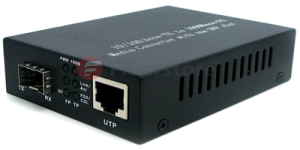In June of 2010, the IEEE 802.3 ba 40G/100G standard issued. The Standard Approval timeline for IEEE 802.3ba is depicted in the figure. It makes me looking good forward to its development in the future. Traditional 10G port modules usually adopt LC connector, they are connected by dual cores while 40G Ethernet specification requires 8 cores connections, just 4 cores used for transmitting and another 4 cores used for receiving. Better advice for 40G Ethernet is that the 12 cores fiber cabling solution, each channel has 4 special transmitting fiber and 4 special receiving fiber, middle 4 fibers remain free. 100G Ethernet solution requires to make 24 fibers, it divided into two 12 fibers, one for receiving and another for transmitting, and each of the array, middle 10 fibers used for transit traffic, the two fibers on the ends are setting free.
Several years ago, once we met customers who wants to know if our transceiver modules support 40G and 100G ports, we will tell them that some suppliers who launched the 40G and 100G optical transceiver module are mostly based on previous 40G/100G draft, they are not the standard ports, and different vendors exist connection trouble, so we are all not sure. But nowadays, with the mature development of 40G and 100G cores, many supplier launched them their own fiber optic transceiver. In the field of 40G and 100G, device manufacturers adopt the advantage of long term evolution and 40G network which focus on 100G network communication equipment. In fact, it is the estimated results that operator who faces with 40G and 100G network. In the next year, 40G long distance transmission network market supplier will launch the 100G network transmission devices, it will bring a big challenge to the operator. The fact dedicates that fiber optic device operators will do double budgets for current production to meet the demand of the future developments.
In the network market, WDM devices are quite popular between global operators. It makes the sales of the products to improve highly. Adjustable and pluggable optical transceiver module, such as XFP, become quite popular in the ROADM network market, it will broaden the network scopes of operators, includes IP/Ethernet CMTs, OLTs FTTH, DSLAMs. As for the 10G SFP+ transceiver module, such as 10G SFP+ 1550nm 80km, it sales reached three times, they are primarily applied into 10G Ethernet and 8G/16G fiber channel. The main reason why development speed of 100G fiber network faster than 40G is that the price of 100G network is lower than 40G, so the much lower LR4 modules will have a great future. Related product: SFP-10G-LR, see at the figure.
Faced with the rapid progress of 40G and 100G optical transceiver modules, FS.COM also research its brand. Including production and sales of 40G and 100G. FS.COM has high quality and reasonable price. Our fiber optical transceivers all pass certification. If you have fiber optical transceivers needs, FS.COM will be your first choice.

 A transceiver, or converter, is typically a device that has two receptacles or ports. One mates with the transmit optical fiber and the other mates with the receive optical fiber. This allows the device to be transmitting and receiving simultaneously. This is known as full-duplex operation, e.g., a
A transceiver, or converter, is typically a device that has two receptacles or ports. One mates with the transmit optical fiber and the other mates with the receive optical fiber. This allows the device to be transmitting and receiving simultaneously. This is known as full-duplex operation, e.g., a  An FTTH PON uses optical fiber from the central office to the home; there are no active electronics helping with the transmission of data in between the two locations. The central office is a communications switching facility. It houses a large number of complex switches that establish temporary connections between subscriber lines that terminate at the central office. At the home, a converter box (e.g., a
An FTTH PON uses optical fiber from the central office to the home; there are no active electronics helping with the transmission of data in between the two locations. The central office is a communications switching facility. It houses a large number of complex switches that establish temporary connections between subscriber lines that terminate at the central office. At the home, a converter box (e.g., a